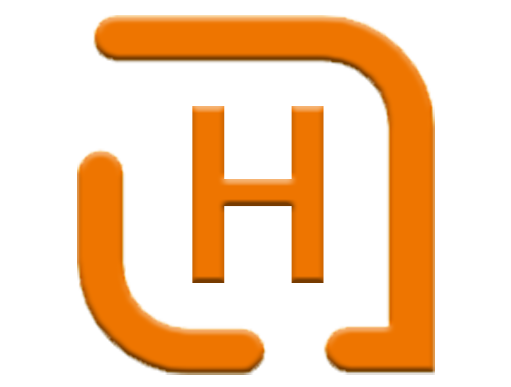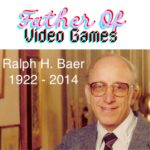A Journey Through Time: The Rich History of Turkey
Turkey, a land where the East meets the West, has a history that stretches back thousands of years. This transcontinental country, bridging Europe and Asia, boasts a rich tapestry of cultures, civilizations, and historical milestones. From ancient Anatolia to the rise of the Ottoman Empire, and the formation of modern Turkey, the nation’s story is one of resilience, innovation, and enduring legacy.
Ancient Anatolia: The Cradle of Civilization
The history of Turkey begins in ancient Anatolia, a region that has been inhabited since the Paleolithic era. One of the earliest known settlements in the world, Çatalhöyük, dates back to approximately 7500 BC. This Neolithic site provides incredible insights into early human societies, showcasing advanced urban planning and intricate art forms.
Anatolia was also home to the Hittites, an ancient civilization that emerged around 1600 BC. The Hittites established a powerful kingdom, known for its military prowess, legal innovations, and architectural achievements. Their capital, Hattusa, is a UNESCO World Heritage site and a testament to their sophisticated society.
The Classical Period: Greeks and Romans
The classical period saw Anatolia become a melting pot of Greek and Roman influences. After the decline of the Hittite Empire, various Greek city-states established colonies along the Aegean coast. Cities like Ephesus, Miletus, and Pergamon became centers of learning, culture, and commerce.
The region came under Persian rule in the 6th century BC, but this was short-lived. Alexander the Great’s conquests in the 4th century BC brought Anatolia into the Hellenistic world. The fusion of Greek and local cultures during this period was profound, leading to significant developments in art, science, and philosophy.
In 133 BC, Anatolia became part of the Roman Republic and later the Roman Empire. The Romans left an indelible mark on the region, building grand cities, roads, and monuments. Ephesus, with its magnificent Library of Celsus and the Temple of Artemis (one of the Seven Wonders of the Ancient World), exemplifies Roman grandeur.
Byzantine Era: The Eastern Roman Empire
With the division of the Roman Empire in 395 AD, Anatolia became the heartland of the Byzantine Empire. Constantinople (modern-day Istanbul), the capital, was one of the world’s most splendid cities. The Byzantines were known for their unique blend of Roman governance, Christian religion, and Greek culture.
The Hagia Sophia, an architectural marvel completed in 537 AD, stands as a symbol of Byzantine ingenuity. This massive cathedral, later converted into a mosque and now a museum, reflects the empire’s architectural and artistic prowess.
The Byzantine period was also marked by religious and political upheavals, including the Iconoclastic Controversy and invasions by various groups such as the Seljuks and Crusaders. Despite these challenges, the Byzantines maintained a vibrant and resilient civilization until the fall of Constantinople in 1453.
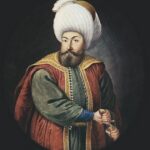 The Rise of the Ottoman Empire
The Rise of the Ottoman Empire
The fall of Constantinople marked the end of the Byzantine Empire and the beginning of the Ottoman Empire. Founded by Osman I in the late 13th century, the Ottomans expanded rapidly, creating one of history’s largest and longest-lasting empires.
Under the rule of Suleiman the Magnificent (1520-1566), the Ottoman Empire reached its zenith. Suleiman’s reign was characterized by military conquests, legal reforms, and cultural flourishing. The empire’s vast territory spanned three continents, encompassing diverse cultures and religions.r
Ottoman architecture, art, and literature flourished during this period. The Blue Mosque in Istanbul, Topkapi Palace, and the calligraphic works of Ottoman artists are just a few examples of the empire’s rich cultural heritage.
The Decline and Fall of the Ottoman Empire
The 17th century marked the beginning of the gradual decline of the Ottoman Empire. A combination of internal strife, military defeats, and economic difficulties weakened the empire. The rise of European powers and the Industrial Revolution further exacerbated the Ottomans’ challenges.
The 19th century saw attempts at modernization and reform, known as the Tanzimat reforms. These efforts aimed to centralize and modernize the administration, economy, and military. However, these reforms were only partially successful.
The empire’s involvement in World War I on the side of the Central Powers led to its ultimate downfall. Following the war, the victorious Allied Powers partitioned Ottoman territories. The empire’s final dissolution came with the establishment of the Republic of Turkey in 1923 by Mustafa Kemal Atatürk.
The Birth of Modern Turkey 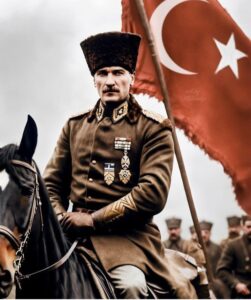
Mustafa Kemal Atatürk, a visionary leader, spearheaded the movement to create a modern, secular, and nationalist state from the remnants of the Ottoman Empire. He introduced sweeping reforms aimed at transforming Turkey into a progressive nation.
Atatürk’s reforms included the adoption of the Latin alphabet, the establishment of a secular education system, and the promotion of women’s rights. The capital was moved from Istanbul to Ankara to symbolize a break from the Ottoman past and a focus on the future.
The Republic of Turkey emerged as a new nation, committed to modernization and Westernization. Despite numerous challenges, Turkey has continued to develop economically, socially, and politically.
Turkey in the 20th and 21st Centuries
Throughout the 20th century, Turkey navigated a complex landscape of political change, economic development, and social transformation. The multi-party system was introduced in 1946, leading to significant political diversity and competition.
Turkey’s strategic location made it a crucial player in international politics, especially during the Cold War. The country joined NATO in 1952, aligning itself with Western powers.
Economic growth accelerated in the latter half of the 20th century, with major infrastructure projects, industrialization, and urbanization. However, Turkey also faced challenges such as political instability, military coups, and regional conflicts.
In the 21st century, Turkey has continued to evolve, balancing its rich cultural heritage with modernization efforts. The country has pursued membership in the European Union, although this process has been fraught with difficulties.
The Turkish Language: A Journey Through History, Structure, and Culture
A Historical Overview: From Central Asia to Modern Turkey
The Turkish language belongs to the Oghuz branch of the Turkic language family, which has its origins in Central Asia. The earliest known Turkic inscriptions, such as the Orkhon inscriptions from the 8th century, provide valuable insights into the ancient Turkic languages and their use in the region.
The migration of Turkic tribes westward, particularly the Seljuks and later the Ottomans, brought the language to Anatolia. Old Anatolian Turkish emerged as a distinct form during the Seljuk period, blending Turkic roots with Persian and Arabic influences due to the region’s cultural and political context.
The Ottoman Empire, spanning from the 14th to the early 20th century, saw the evolution of Ottoman Turkish. This period introduced a significant number of loanwords from Arabic and Persian, creating a sophisticated and hybrid language used in administration, literature, and courtly communication.
The most transformative period for the Turkish language came with the establishment of the Republic of Turkey in 1923. Mustafa Kemal Atatürk, the founder of modern Turkey, spearheaded sweeping language reforms aimed at simplifying and purifying Turkish. The adoption of the Latin alphabet in 1928 replaced the Arabic script, making the language more accessible and promoting literacy.
The Structure of Turkish: Phonology, Grammar, and Vocabulary
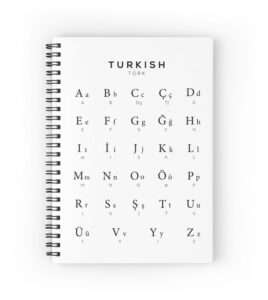
Phonology
Turkish phonology is characterized by vowel harmony, a system where vowels within a word harmonize to be either front or back vowels. There are eight vowels in Turkish: a, e, ı, i, o, ö, u, ü. Consonant sounds are relatively straightforward, and the language features a phonemic inventory that is generally easier for speakers of other languages to learn.
Grammar
Turkish grammar is agglutinative, meaning that words are formed by adding a series of suffixes to a root word. This structure allows for the creation of complex meanings through the combination of simple elements. For example, the verb “gelmek” (to come) can be transformed into various forms such as “geleceğim” (I will come) or “gelmedim” (I did not come) through the use of suffixes.
Nouns in Turkish do not have gender, simplifying the learning process for speakers of languages with gendered nouns. The language also uses postpositions rather than prepositions, and the typical word order in a sentence is subject-object-verb (SOV).
Vocabulary
Turkish vocabulary has been shaped by its interactions with various cultures and languages. While the core vocabulary remains Turkic, many words have been borrowed from Arabic, Persian, French, Italian, and more recently, English. The language reforms of the early 20th century aimed to replace many of these loanwords with Turkish equivalents, but many foreign terms remain in everyday use.
Cultural Significance: Language and Identity
The Turkish language is a crucial element of Turkish identity and culture. It serves as a unifying force for the country’s diverse population, providing a common means of communication and cultural expression. Turkish literature, music, cinema, and media play significant roles in shaping and reflecting societal values and traditions.
Literature and Poetry
Turkish literature has a rich history, with roots in both folk traditions and classical Ottoman poetry. Prominent figures like Yunus Emre and Nazım Hikmet have left a lasting legacy, using the Turkish language to convey profound philosophical and social themes. Contemporary Turkish literature continues to thrive, with authors like Orhan Pamuk gaining international recognition.
Music and Folklore
Turkish music, from traditional folk songs to modern pop, showcases the linguistic and cultural diversity of the country. Folk songs (türkü) often tell stories of love, heroism, and daily life, while contemporary music incorporates elements from various genres, reflecting the dynamic nature of Turkish culture.
Cinema and Media
Turkish cinema and television have gained popularity both domestically and internationally. Turkish dramas, known as “dizis,” have captivated audiences worldwide, promoting the Turkish language and culture on a global scale. The use of Turkish in media and entertainment continues to play a significant role in preserving and promoting linguistic heritage.
Learning Turkish: Tips and Resources
For those interested in learning Turkish, numerous resources are available to facilitate the process. Language courses, online platforms, and language exchange programs offer structured learning opportunities. Immersing oneself in Turkish culture through music, films, and literature can also enhance language skills and provide a deeper understanding of the cultural context.
Turkey’s Cultural Heritage: A Mosaic of History and Tradition
Turkey, a land where East meets West, is a treasure trove of cultural heritage that reflects its rich and diverse history. This unique country, straddling two continents, boasts a tapestry of traditions, architecture, arts, and culinary delights that have been shaped by various civilizations over millennia.
Historical Monuments and Architecture
Turkey’s architectural landscape is a testament to its complex history. The ancient city of Ephesus, with its grand Library of Celsus and the Temple of Artemis, showcases the splendor of Greek and Roman civilizations. The Byzantine era left behind the magnificent Hagia Sophia in Istanbul, a marvel of engineering and artistry that has served as both a cathedral and a mosque.
The rise of the Ottoman Empire introduced an array of architectural wonders, including the stunning Blue Mosque and Topkapi Palace. Ottoman architecture is characterized by its intricate tile work, grand domes, and elegant minarets. These structures not only serve as historical landmarks but also as symbols of Turkey’s enduring legacy.
Traditional Arts and Crafts
Turkey is renowned for its traditional arts and crafts, which have been passed down through generations. Turkish carpets and kilims are celebrated for their intricate designs and craftsmanship. Each rug tells a story, often reflecting the cultural and regional influences of the weaver.
The art of calligraphy and miniature painting flourished during the Ottoman period, with delicate and detailed works that are still admired today. Turkish ceramics, particularly from the town of İznik, are famous for their vibrant colors and intricate patterns. These crafts continue to thrive, blending ancient techniques with contemporary designs.
Culinary Heritage
Turkish cuisine is a rich mosaic of flavors and techniques that reflect the country’s diverse history. Influences from Central Asia, the Middle East, and the Mediterranean are evident in the wide variety of dishes. Kebabs, mezes, and baklava are just a few examples of the culinary delights that have become synonymous with Turkish food.
The Turkish tea culture, with its emphasis on hospitality, plays a significant role in daily life. Sharing a cup of strong, black tea is a symbol of friendship and social bonding.
Festivals and Traditions
Turkey’s cultural heritage is also celebrated through its numerous festivals and traditions. The Whirling Dervishes of Konya, who perform the Sema ceremony, represent the mystical Sufi tradition and its spiritual practices. The colorful Spring Festival of Nevruz marks the Persian New Year and is celebrated with music, dance, and traditional foods.
A Culinary Journey Through Turkish Cuisine: Must-Try Foods
Turkish cuisine is a vibrant and diverse tapestry of flavors and traditions, reflecting the rich cultural heritage of the region. From succulent kebabs to sweet pastries, Turkish food offers something for every palate. Here’s a guide to some of the must-try dishes that showcase the best of Turkish culinary delights.
1. Kebabs: A Grilled Delight
Kebabs are a cornerstone of Turkish cuisine, with a variety of styles and flavors to explore. Some popular types include:
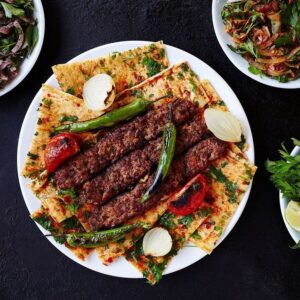
- Adana Kebab: A spicy minced meat kebab named after the city of Adana. It’s typically made with lamb and a mix of spices, grilled to perfection.
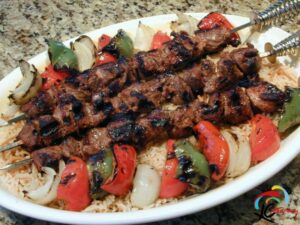 Şiş Kebab: Skewered chunks of marinated meat (often lamb or chicken), grilled and served with vegetables and rice.
Şiş Kebab: Skewered chunks of marinated meat (often lamb or chicken), grilled and served with vegetables and rice.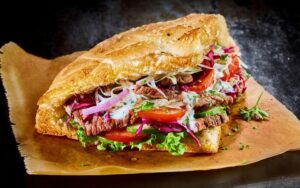 Döner Kebab: Thinly sliced seasoned meat cooked on a vertical rotisserie. It’s often served in a wrap or pita with vegetables and sauce.
Döner Kebab: Thinly sliced seasoned meat cooked on a vertical rotisserie. It’s often served in a wrap or pita with vegetables and sauce.
2. Mezes: A Variety of Small Dishes
Mezes are small appetizers that are perfect for sharing. They offer a variety of flavors and textures:
 Hummus: A creamy blend of chickpeas, tahini, lemon juice, and garlic.
Hummus: A creamy blend of chickpeas, tahini, lemon juice, and garlic. Ezme: A spicy tomato and pepper relish made with finely chopped vegetables, herbs, and spices.
Ezme: A spicy tomato and pepper relish made with finely chopped vegetables, herbs, and spices.- Cacık: A refreshing dip made from yogurt, cucumber, garlic, and dill, similar to Greek
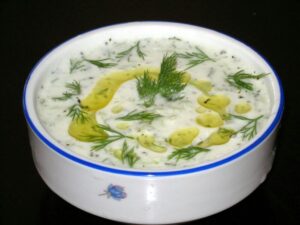 tzatziki.
tzatziki.
3. Pide: Turkish Pizza
Pide, often referred to as Turkish pizza, is a boat-shaped flatbread topped with various ingredients:
 Cheese Pide: Topped with a mix of Turkish cheeses, sometimes with an egg added on top.
Cheese Pide: Topped with a mix of Turkish cheeses, sometimes with an egg added on top. Meat Pide: Often topped with minced meat, onions, peppers, and tomatoes, seasoned with spices.
Meat Pide: Often topped with minced meat, onions, peppers, and tomatoes, seasoned with spices.
4. Börek: Savory Pastries
Börek is a popular pastry made from thin layers of dough filled with cheese, meat, or vegetables:
- Sigara Böreği: Cylindrical pastries filled with feta cheese and herbs, often deep-fried until crispy.

- Su Böreği: A water pastry layered with cheese and herbs, resembling a lasagna in texture.

5. Dolma and Sarma: Stuffed Delights
 Dolma and sarma involve vegetables or vine leaves stuffed with a flavorful mixture:
Dolma and sarma involve vegetables or vine leaves stuffed with a flavorful mixture:
- Dolma: Vegetables like bell peppers, zucchini, and tomatoes stuffed with rice, pine nuts, and spices.
- Sarma: Vine leaves wrapped around a filling of rice, herbs, and sometimes minced meat.
6. Manti: Turkish Dumplings
Manti are small dumplings filled with spiced meat, typically served with a garlic yogurt sauce and topped with melted butter and red pepper flakes. They are often compared to ravioli and are a beloved comfort food.
7. Lahmacun: Turkish Flatbread
Lahmacun is a thin, crispy flatbread topped with a mixture of minced meat, onions, tomatoes, and spices. It’s often rolled up with fresh herbs and a squeeze of lemon juice.
8. Kumpir: Loaded Baked Potato
 Kumpir is a popular street food made from a baked potato, split open and mashed with butter and cheese, then filled with a variety of toppings like olives, sausages, pickles, and vegetables.
Kumpir is a popular street food made from a baked potato, split open and mashed with butter and cheese, then filled with a variety of toppings like olives, sausages, pickles, and vegetables.
9. Desserts: Sweet Endings
Turkish desserts are rich and flavorful, often featuring nuts and syrup:
Baklava: Layers of thin pastry filled with chopped nuts and sweetened with syrup or honey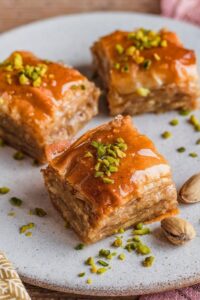 .
.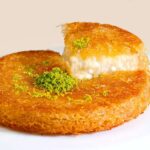
- Künefe: A cheese-filled dessert made from shredded phyllo dough, soaked in syrup and typically served hot.
- Turkish Delight (Lokum): A chewy confection flavored with rosewater, lemon, or other
 ingredients, often dusted with powdered sugar.
ingredients, often dusted with powdered sugar.
10. Beverages: Refreshing Drinks
Turkish cuisine is also complemented by a variety of traditional beverages:
- Turkish Tea (Çay): Served in small tulip-shaped glasses, it’s a staple of Turkish hospitality.
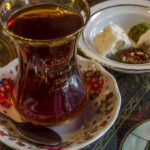
- Turkish Coffee: Strong and thick, often served with a piece of Turkish delight.

- Ayran: A refreshing yogurt-based drink, often served with savory dishes.
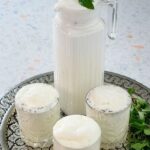
Top Travel Destinations in Turkey: A Guide to Must-See Places
Turkey, a captivating country that straddles two continents, offers a diverse array of travel destinations that cater to every type of traveler. From ancient ruins and stunning natural landscapes to vibrant cities and pristine beaches, Turkey’s attractions are as varied as they are impressive. Here’s a guide to some of the top travel destinations in this enchanting land.
1. Istanbul: The City of Two Continents
Istanbul, Turkey’s largest city, is a vibrant metropolis where East meets West. Its rich history and cultural heritage make it a must-visit destination. Key attractions include:
- Hagia Sophia: Once a cathedral, then a mosque, and now a museum, this architectural marvel is a testament to Istanbul’s diverse history.
- Topkapi Palace: The opulent residence of Ottoman sultans, offering stunning views of the Bosphorus and a glimpse into royal life.
- Blue Mosque: Known for its stunning blue tiles and six minarets, this mosque is an iconic symbol of Istanbul.
- Grand Bazaar: One of the oldest and largest covered markets in the world, perfect for shopping and experiencing local culture.
2. Cappadocia: A Land of Fairy Chimneys
Cappadocia, located in central Turkey, is famous for its unique rock formations, underground cities, and hot air balloon rides. Highlights include:
- Göreme Open-Air Museum: A UNESCO World Heritage site featuring rock-cut churches with beautiful frescoes.
- Hot Air Balloon Rides: Experience breathtaking views of the surreal landscape at sunrise.
- Uchisar Castle: A natural rock citadel offering panoramic views of Cappadocia.
- Derinkuyu Underground City: An ancient multi-level underground city that once housed thousands of people.
3. Pamukkale: The Cotton Castle
Pamukkale, meaning “cotton castle” in Turkish, is renowned for its white travertine terraces and thermal springs. Visitors can explore:
- Travertine Terraces: Natural pools formed by mineral-rich waters cascading down white terraces.
- Hierapolis: An ancient Greco-Roman city with well-preserved ruins, including a theater and necropolis.
- Cleopatra’s Pool: A thermal pool where visitors can swim among submerged ancient columns.
4. Ephesus: Ancient Ruins and Historical Wonders
Ephesus is one of the best-preserved ancient cities in the Mediterranean, offering a glimpse into the grandeur of Roman architecture. Key sites include.
- Library of Celsus: An impressive Roman building that once held thousands of scrolls.
- Temple of Artemis: One of the Seven Wonders of the Ancient World, though only a few remnants remain.
- Great Theatre: A massive ancient theater that could seat 25,000 spectators.
- Terrace Houses: Luxurious residential units that provide insights into the daily life of Ephesus’ elite.
5. Antalya: The Turquoise Coast
Antalya, located on Turkey’s southwestern coast, is known for its stunning beaches, clear waters, and historical sites. Highlights include:
- Kaleiçi: The charming old town with narrow streets, historic houses, and vibrant markets.
- Düden Waterfalls: Beautiful waterfalls located just outside the city.
- Konyaaltı and Lara Beaches: Pristine beaches perfect for sunbathing and swimming.
- Antalya Museum: One of Turkey’s largest museums, featuring a vast collection of artifacts from the region.
6. Bodrum: A Blend of History and Modernity
Bodrum, on the Aegean coast, is a popular destination for its lively nightlife, beautiful beaches, and historical sites. Attractions inclu
- Bodrum Castle: A medieval fortress housing the Museum of Underwater Archaeology.
- Bodrum Marina: A bustling area with shops, restaurants, and luxury yachts.
- Mausoleum at Halicarnassus: One of the Seven Wonders of the Ancient World, although only the foundations remain.
7. Mount Ararat: A Majestic Peak
Mount Ararat, the highest peak in Turkey, is believed to be the resting place of Noah’s Ark. It is a popular destination for mountaineers and those seeking adventure.
- Climbing Expeditions: Trekking to the summit offers stunning views and a sense of accomplishment.
- Ishak Pasha Palace: A beautiful palace near the mountain with intricate architecture and a rich history.
Conclusion: A Tapestry of Heritage and Progress
The history of Turkey is a testament to the resilience and adaptability of its people. From the ancient civilizations of Anatolia to the powerful Byzantine and Ottoman Empires, and the formation of modern Turkey, the nation’s story is rich and multifaceted.
